Most of Florida ranchlands occurs in a historic region of south-central and southwest Florida where native dry prairie and other grassland savanna type ecosystems (including pine flatwoods) were the predominant landcover types; these landcover types are habitat to a myriad of threatened and endangered wildlife that have adapted to these ecosystems. The ranches of south Florida maintain a landscape that includes native prairie, other grassland and native ecosystems that still provide essential habitat for our wildlife species including the federally listed: crested caracara, wood stork, snail kite, Florida grasshopper sparrow, Florida panther and many more. Other wildlife species dependent on this ranchland landscape include Florida sandhill crane, burrowing owl, American southeastern American kestrel, bald eagle, swallow-tailed kite, short-tailed hawk, and mottled duck.
In addition, these ranches provide a very large mosaic of grassland and forested habitat and wildlife corridors with low human population densities needed to support existing populations and future viability for the Florida panther and Florida black bear as well as other landscape dependent species including the eastern indigo snake, Sherman’s fox squirrel, and Big Cypress fox squirrel.
These ranches currently protect thousands of acres of intact wetlands and floodplains essential for storing and cleaning water in the Everglades and other watersheds throughout the southern half of the Florida peninsula. Ranches provide the opportunity to expand additional water storage to meet our goals for providing sufficient flood storage and water quality treatment to restore watersheds and reduce algal blooms and other consequences of degraded surface water.

